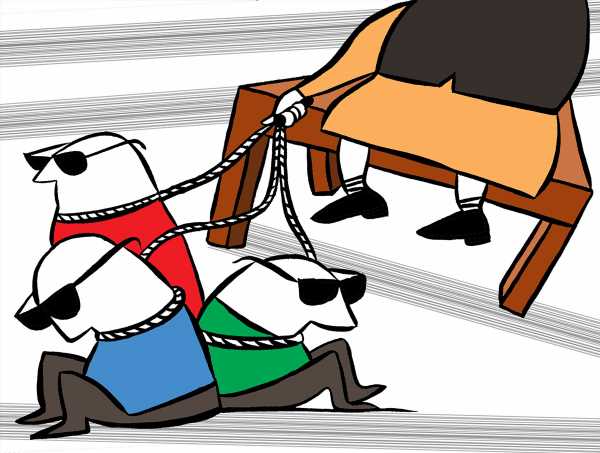‘All regulatory agencies must be made Constitutional bodies like the Election Commission, the Supreme Court, and the CAG.’
‘That way they will become independent of the minister,’ recommends T C A Srinivasa-Raghavan.
Here’s a question that polite people are not asking: Could the extraordinary happenings at the National Stock Exchange have happened without the finance minister and his key officials knowing, even if the former didn’t know the details and latter were merely what Lenin called ‘useful idiots’? Does the sun rise in the West?
One more question: Can Sebi doze off on the job like the durwans who see their main job as being a khidmatgar to the boss, and not a guard?
Can the RBI be so utterly neglectful in its supervision of banks?
Can Trai be so blatantly partisan, even if only occasionally?
Numerous instances of regulatorss’ desire to please the minister, at the expense of their regulatory mandate, or even plain dereliction of duty, can be, and have been, listed.
The harsh truth is that, by and large, Indian regulators are mere puppets.
The odd regulator who disagrees with the minister is bypassed via the joint secretary in the ministry.
However, the flaw, as Cassius might have said, is in the design and not always the regulators themselves.
They can resist their ministry only up to a point. And if a joint secretary, who, too, sees his main job as being to please his minister, decides to have a go at the regulator, saying cooperate or quit, it’s pretty much game, set and match to the minister.
The government itself can be rendered impotent by an aggressive and knowledgeable minister.
It’s this systemic flaw that India must remove by making the asymmetrical relationship between minister and regulator completely symmetrical.
Regulators should not, repeat not, be ‘a subordinate department of the ministry’. That was in 1958.
This asymmetry exists because India, unlike other countries, has three types of regulators.
At the top are those created by the Constitution. Then come those created by Parliament. And at the bottom are the ones created by the ministries.
The second and the third are thus at a great disadvantage vis-a-vis the minister. This disadvantage can be, and is, taken advantage of by unscrupulous ministers.
What happens then is well-known: Mind-numbing scams in which the puppeteers and the puppets both go scot-free. Indeed, the structural design is such.
Two changes needed
I think there are two major changes, pertaining to our approach to regulation, which must be implemented by the Modi government. It now has the opportunity.
First, all regulatory agencies must be made Constitutional bodies like the Election Commission, the Supreme Court, and the CAG.
That way they will become independent of the minister, and their funding will be assured from the Consolidated Fund of India instead of being hostage to budgetary allocations.
Second, the heads of all these agencies — old and new — must have Cabinet rank for obvious reasons. I mean, just think about how absurd the current power structure is.
We have ministers for steel and fertiliser and textiles and even food processing. They regulate output and investment.
Yet some of them have Cabinet rank while regulators who have to oversee an entire market are far lower down in importance.
This will ensure, to a far greater degree than now, that the relationship between the government and the regulator is not that of master and servant.
In short, sovereign power should be taken out of the equation because in our system the agents of the sovereign can often behave knavishly.
A Constitution, as political scientists always tell us, is intended to minimise the damage sovereign power in the wrong hands can do.
So ask yourself: How would the RBI, Sebi, and other regulators discharge their mandate if they were reporting to Parliament instead of a minister or a secretary or even a joint secretary?
Since 2014 the Modi government has attempted several structural reforms. It has succeeded in pushing some through, and failed in others.
As we near the second quarter of the 21st century the old arrangements are becoming counterproductive because crooks will always be ahead of the game.
And when they join hands with political and administrative power, they become, as we have seen since 1993, virtually unstoppable. Or even if they are stopped, they go unpunished.
This is not to say that by giving Constitutional status to regulators the problem of regulatory capture will disappear.
But as we have seen with other Constitutional institutions, it won’t be as bad as it is now.
In fact, it will be much better because the sheer weight of an office induces action in the public interest.
Feature Presentation: Rajesh Alva/Rediff.com
Source: Read Full Article

